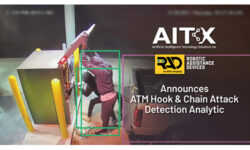Mass Notification Appeal
Building upon basic voice communication systems, new mass notification platforms can integrate multiple technologies to communicate via public address, digital signage, texting, E-mail and more. For security contractors that adeptly maneuver through issues unique to the market, opportunities can be expected to follow.

The Protection Bureau of Exton, Pa., provided Millersville University with Cooper Notification's Roam Secure Alert Network (RSAN). The emergency communication solution is integrated with Cooper Notification's WAVES speaker array, above.
Propelled by tragic events such as the Virginia Tech shooting massacre in 2007, a new generation of mass notification technologies are fast opening new doors of opportunity for security contractors in education, retail center, health care, government facility and other verticals.[IMAGE]SS8mass-miller.jpg[/IMAGE]
At its foundation, a mass notification system (MNS) is based on the same principle as voice evacuation. Today, however, new solutions are allowing for a far greater ability to deliver specific life-safety messages to targeted groups by way of multiple means of communication. These include live or recorded voice announcements over outdoor loudspeakers or indoor paging systems, text messaging, E-mail blasts, radio, fax machines, electric signs and others.
Also known as emergency communications systems (ECS), these new solutions are even being leveraged to improve business processes and other internal communication tasks for end users. Along with essential installation skill sets, including IP/IT proficiency, security contractors looking to capitalize on this growing market will need to gain an understanding of the facets unique to MNS. Among them are keeping abreast of new changes to NFPA 72 codes and requirements, negotiating market impediments and identifying projects that best suit your company’s abilities.
Overview of Vertical Opportunities
University campuses are among the most active verticals currently in the MNS market. In a recent mass notification survey, SSI asked readers which applications are proving the most popular; colleges/universities led the pack along with office buildings.
Helping drive this vertical, the Higher Education Opportunity Act of 2008 mandates all educational facilities to have the capability to immediately notify all personnel in the event of an emergency. Stimulus funding and grants are also providing some of the financial wherewithal for colleges and universities to pursue new and enhanced life-safety measures.
The higher education market “is heating up more and more everyday,” says Ted Milburn, GE Security’s product marketing manager for the Americas. Nowadays campus officials are driving emergency communication purchases in new ways, Milburn says. “They are saying to parents, ‘We will keep your kids safe,’ and it becomes a great marketing tool for them to deploy some form of mass notification.”
All facilities with a considerable footprint, especially those with multiple buildings, are a natural customer for MNS. Think hospitals, shopping malls, sports stadiums, transit sites, assembly complexes and the like. Any location where large groups of people gather is a prime candidate for MNS and especially intelligible voice mass notification solutions.
Among other various market niches that present growth opportunities for security contractors, hospitals can frequently be the trickiest to integrate MNS. Oftentimes, immediate evacuation or relocation may not be an option, for patients and staff. Other events may necessitate alerting staff to an emergency without notifying patients. In these scenarios, hospital workers can execute prearranged emergency plans without compromising patient safety.[IMAGE]iS-6057284M-SS.jpg[/IMAGE]
Campus environments of all types can also present multiple challenges when designing/installing MNS. Typically these environments are outfitted with an assortment of legacy equipment that may have a limited life expectancy, making integration of newer technologies difficult. Such predicaments are not lost causes, however, and even present opportunities. Working closely with stakeholders, a security contractor can specify a MNS that operates at a minimal level while instituting an action plan to expand the solution as capital investment allows.
The important issue is to help end users understand why a layered technology approach is in their best interest, says Patrick Fiel Sr., a public safety advisor for ADT Security Services. Many customers may believe a single technology, such as an outdoor siren, will meet their goals and requirements. The siren can alert the intended groups, but how you provide specific life-safety instruction from there can be dubious.
“You have to define exactly what message you are trying to relay,” Fiel says. “To do that you need multiple systems, redundancy systems to notify multiple people at different given times.”
MNS Demands IT/IP Know-How
Just as other design and installation disciplines within the electronic security profession place a premium on an integrator’s networking skills, IP-based technologies have made an indelible impact on MNS.
The extensive use of TCP/IP-based Wide Area Networks (WANs) or Local Area Networks (LANs) allow facilities in different geographic areas to seamlessly communicate with each other during an emergency. Still other control equipment allows for control panels to be networked together through existing Internet connections.
The beauty of all this connectivity is it allows for MNS to integrate the multiple layers of communication mentioned above, and ultimately provide a holistic solution that ties together indoor and outdoor areas.
If you enjoyed this article and want to receive more valuable industry content like this, click here to sign up for our FREE digital newsletters!

Security Is Our Business, Too
For professionals who recommend, buy and install all types of electronic security equipment, a free subscription to Commercial Integrator + Security Sales & Integration is like having a consultant on call. You’ll find an ideal balance of technology and business coverage, with installation tips and techniques for products and updates on how to add to your bottom line.
A FREE subscription to the top resource for security and integration industry will prove to be invaluable.








